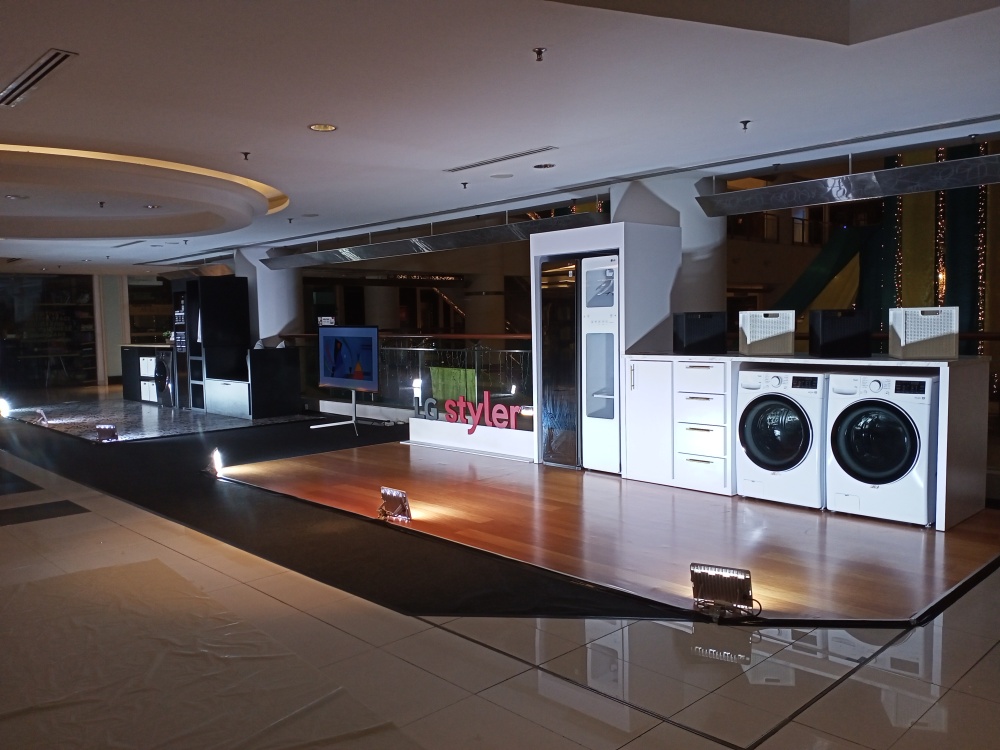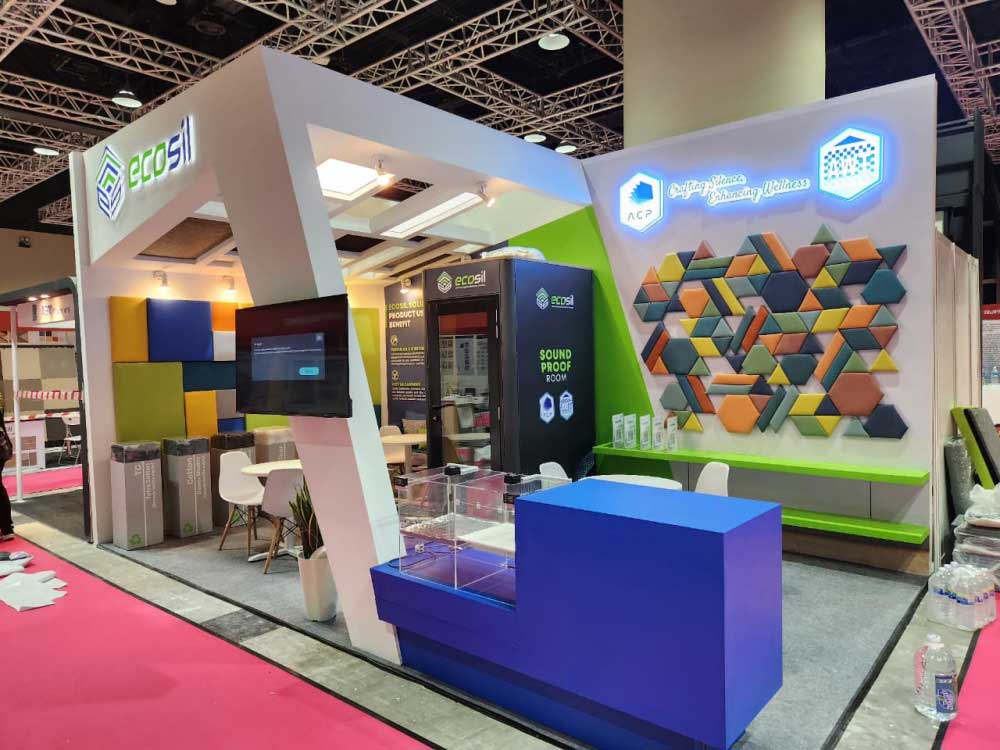Planning a successful roadshow event might seem like a daunting task, but with the right approach, it can be a rewarding experience. Roadshows are a fantastic way to engage with your audience, showcase your products or services, and build lasting relationships. In this guide, we’ll walk you through the essential steps to plan and execute a roadshow that leaves a lasting impact.
Understanding Roadshow Events
A roadshow event is a series of presentations or promotional events conducted in different locations to reach a wide audience. These events can range from product launches and corporate meetings to educational seminars and community outreach programs.

Types of Roadshows
Roadshows can be categorized into several types, including:
Corporate Roadshows
A corporate roadshow is essentially a traveling marketing event designed to connect a company with various important audiences. It’s like a mini-conference on the road, with presentations, meetings, and networking opportunities.
Some specific examples of roadshows are:
- Company A is going public (IPO): They conduct a roadshow to introduce themselves to potential investors, explain their business model, and convince them to buy shares in the company.
- Company B launches a new product: They use a roadshow to present the product to potential clients in different regions, answer questions, and generate excitement.
- Company C seeks industry partnerships: They organize a roadshow to connect with other companies in their field, explore collaboration opportunities, and build relationships.
Marketing Roadshows
Marketing roadshows are like taking your brand on a tour, bringing your message directly to potential customers in different locations. Imagine a mini-expo focused on your product or service, traveling from city to city.
Marketing roadshows can be used for various purposes such as, promoting a new service or subscription plan, educating customers about a complex product, reaching a specific target audience in a particular region, or building relationships with potential business partners or distributors.
Here’s an example to illustrate it:
Company X develops a new fitness tracker. Instead of relying solely on online marketing, they decide to launch a marketing roadshow. They rent a branded van equipped with demo stations and travel to major fitness centers across the country.
At each stop, they set up interactive displays where people can try out the fitness tracker. They will also have company representatives on hand to answer questions and explain the product’s features.
The goal of this marketing roadshow is to get people familiar with the company and their new fitness tracker. Besides, they can also capture contact information from interested potential customers.
Educational Roadshows
Educational roadshows are mobile educational events that bring learning opportunities directly to different locations. Unlike traditional classroom settings, they offer an interactive and engaging way to learn outside of the four walls.
Here’s an example to showcase the concept:
Imagine “Science Explorers,” a non-profit organization. They organize an educational roadshow about robotics for middle school students. They travel with a mobile science lab equipped with robots, VR headsets, and building materials.
At each school visiting, they can conduct interactive workshops where students get hands-on experience building and programming robots. They can also engaging in presentations to explain the concepts of robotics and its applications in a fun and informative way.
The goals of this educational roadshow are to spark interest in science and technology, to providing hands-on learning experiences, and to bring science education opportunities to schools with limited resources.
By making education accessible and interactive, educational roadshows can be a valuable tool for promoting lifelong learning and engaging diverse audiences.

Setting Clear Objectives
Before you start planning, it’s crucial to define what you want to achieve with your roadshow. Are you looking to generate leads, increase brand awareness, or educate your audience? Clear objectives will guide every decision you make.
Measuring Success
To truly understand how well your roadshow performed, you need to go beyond just showing up in different cities. We need to set some clear goals and then track how well we achieved them. This is where metrics come in – they’re like measuring tools that tell us how effective our roadshow was. There are a few key areas we can look at:
Attendance Numbers: This might seem obvious, but it’s a good starting point. How many people registered for the event? Did that number meet our expectations? Did we see a good turnout in each city we visited?
Engagement Levels: Just because people showed up doesn’t mean they were actively involved. We want to see high engagement – people asking questions, participating in demos, and showing genuine interest. This could involve tracking things like the number of questions asked during presentations, participation in interactive activities, or dwell time at booths.
Lead Generation: A successful roadshow isn’t just about educating attendees; it’s about building relationships and turning that interest into potential customers. We should track how many leads we generated – contact information from interested individuals who might be a good fit for our product or service.
Post-Event Feedback: Numbers are important, but they don’t tell the whole story. We also want to hear directly from attendees. Sending out surveys or conducting interviews after the event can provide valuable insights. What did people think of the content? Were the presentations informative? Would they recommend the roadshow to others? This feedback helps us understand what worked well and where we can improve for future events.
By tracking these metrics, we gain a comprehensive picture of the roadshow’s success. We can see if we reached the right audience, if our message resonated, and if we achieved our overall goals. This information is essential for making adjustments and planning even better roadshows in the future.
Researching Your Audience
Researching your audience is an essential component for ensuring the success of your roadshow. The first step involves clearly identifying who you aim to reach with your presentations and engagements. Consider whether your primary audience consists of potential customers, business partners, or key industry influencers. Each of these groups has unique perspectives, interests, and needs that should shape how you present your information.
Understanding your audience allows you to tailor your content and approach in a way that speaks directly to their specific desires and challenges. For example, potential customers might be most interested in how your product or service can solve their problems or improve their lives. Business partners, on the other hand, may be more focused on the potential for collaboration and mutual benefits. Industry influencers might look for innovative trends, thought leadership, and the broader impact of your offerings.
To gain deeper insights into what your audience is looking for, it’s crucial to conduct thorough research. Surveys can be a highly effective tool for this purpose. By asking targeted questions, you can gather valuable data on your audience’s preferences, pain points, and expectations. Additionally, analyzing existing research reports, studying market trends, and engaging in direct conversations with potential attendees can provide a wealth of information.
This comprehensive understanding will enable you to craft content that is not only relevant but also highly engaging. By addressing the specific needs and interests of your audience, you can ensure that your presentations resonate more deeply, fostering a stronger connection and driving the desired outcomes. This tailored approach demonstrates that you have done your homework and genuinely care about meeting the audience’s needs, which can significantly enhance the overall effectiveness of your roadshow.

Choosing the Right Locations
Factors to Consider
Selecting the right locations can make or break your roadshow. Consider factors like the geographical spread of your target audience, accessibility, and the availability of suitable venues.
Importance of Accessibility
Ensure the locations you choose are easily accessible by public transport and have adequate parking facilities. This will make it easier for your audience to attend.
Budgeting and Resource Allocation
Estimating Costs
Create a detailed budget that includes all potential expenses such as venue hire, travel, accommodation, marketing, and production costs. Factor in a contingency to cover unexpected costs.
Allocating Resources Effectively
Allocate your resources based on priority. Focus on high-impact areas that will drive the success of your event, such as marketing and quality production.
Creating a Compelling Agenda
Structuring the Event
An engaging agenda is crucial for keeping your audience interested. Start with a strong opening, followed by a mix of presentations, interactive sessions, and networking opportunities.
Including Interactive Sessions
Incorporate Q&A sessions, live demonstrations, and hands-on activities to make your event more interactive and engaging.
Securing Sponsorship and Partnerships
Approaching Potential Sponsors
Identify potential sponsors who align with your event’s objectives. Highlight the benefits of sponsoring your roadshow, such as brand exposure and direct access to their target market.
Benefits of Partnerships
Forming partnerships can enhance the value of your roadshow. Collaborate with organizations that complement your offerings and can provide additional resources or expertise.
Effective Marketing and Promotion
Utilizing Social Media
Leverage social media platforms to promote your roadshow. Create event pages, share updates, and engage with your audience through posts and live videos.
Traditional Marketing Techniques
Don’t overlook traditional marketing methods like email campaigns, press releases, and print advertisements. These can be effective in reaching a broader audience.
Engaging Presentations and Demonstrations
Crafting Your Message
Your presentations should be clear, concise, and compelling. Focus on delivering key messages that align with your audience’s interests and needs.
Using Visual Aids
Visual aids like slideshows, videos, and infographics can enhance your presentations and make them more engaging. Ensure they are high quality and support your message.
Logistics and Event Planning
Coordinating Travel and Accommodation
Plan and book travel and accommodation well in advance for your team and any guest speakers. Ensure all arrangements are confirmed and communicated clearly.
On-Site Management
Have a dedicated team to manage on-site logistics, including registration, setup, and troubleshooting any issues that arise during the event.
Audio-Visual Requirements
Ensure you have the necessary audio-visual equipment, such as microphones, projectors, and sound systems. Test all equipment before the event to avoid technical issues.
Backup Plans
Have backup plans in place for potential technical failures. This includes spare equipment and alternative solutions for presentations.
Role Assignments
Assign clear roles and responsibilities to your team members. This ensures everyone knows what is expected of them and can contribute effectively.
Ensuring Consistency
Train your team to deliver a consistent message throughout the roadshow. Consistency is key to maintaining professionalism and credibility.
Setting Up
Arrive early to set up and ensure everything is in place before your guests arrive. Check all equipment and materials are ready for use.
Running the Event Smoothly
Keep the event running smoothly by sticking to the schedule and being prepared to handle any unexpected issues. Maintain a positive and professional attitude throughout.
Collecting Feedback and Follow-Up
Collect feedback from attendees through surveys, feedback forms, or direct conversations. This will provide valuable insights into what worked and what could be improved.
Importance of Post-Event Communication
Post-event communication plays a vital role in the overall success of any event, including roadshows. Following up with attendees after the event is essential for several reasons. First and foremost, it provides an opportunity to express gratitude to participants for their attendance and engagement. A simple thank you can go a long way in making attendees feel valued and appreciated, reinforcing their positive experience with your brand.
Moreover, post-event communication allows you to share additional information or resources that were not covered during the event. This could include detailed product guides, links to recorded sessions, exclusive offers, or answers to questions that were raised. By providing these valuable resources, you demonstrate your commitment to meeting the needs and interests of your audience, thereby enhancing their overall experience.
Maintaining engagement through follow-up communication is also crucial for building and nurturing relationships with your attendees. It keeps the conversation going, ensuring that your brand remains top-of-mind. This ongoing interaction can lead to stronger connections, increased loyalty, and ultimately, more business opportunities. Additionally, follow-up communications can serve as a platform for gathering feedback. Asking attendees for their opinions on the event can provide insights into what worked well and areas for improvement, helping you to refine future events.
In essence, post-event communication is not just a courteous gesture but a strategic tool that helps to solidify the impact of your event. It ensures that the momentum gained during the event is sustained, fostering long-term relationships and maximizing the return on your investment.
Conclusion
Planning a successful roadshow event involves careful preparation, clear objectives, and effective execution. By following these steps, you can create an impactful event that resonates with your audience and achieves your goals. So, start planning your roadshow today and take your message on the road!

